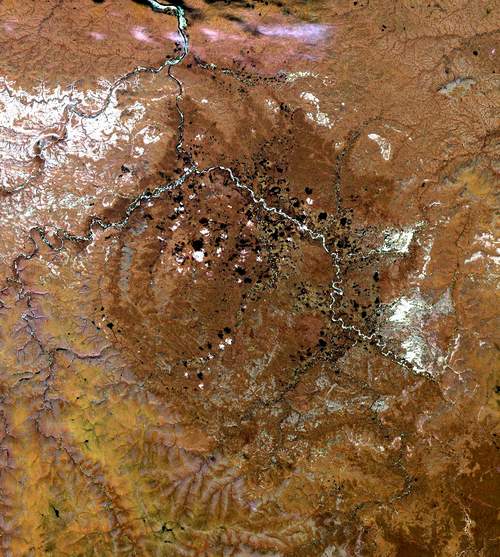The far north of Siberia is believed to have vast and untouched diamond reserves in a unexplored crater. The 100-kilometre (60-mile) Siberian Popigai Crater was formed by a huge asteroid 35 million years ago and is lying 2,000 kilometres from the main Trans-Siberian railway line. The deposit sits at the northern end of the border between the vast Siberian regions of Krasnoyarsk and Yakutia, that mostly extend over uninhabited tundra and permafrost. Popigai sheer remoteness and the state secret status in the Soviet Union era made crater’s exploitation impossible.
Most recent research revealed that the deposit contains “impact diamonds” or so-called “abrasive powders” used for deep-sea drilling or for fine machine parts.
The work by the Novosibirsk-based Sobolev Institute of Geology and Mineralogy raised againg the interest concernig Popigai.
“They (the USSR) discovered it in the 1970s and decided to make it secret,” Sobolev Institute of Geology and Mineralogy director Nikolai Pokhilenko told AFP.
“We were building synthetic diamond plants at the time, so all the natural industrial diamond research was frozen.They only examined 0.3 per cent of the entire territory of the crater and had already established 147 billion carats worth of (industrial) diamonds. So we are talking about many trillion (carats),” said the geologist.
By comparison, Russia’s main diamond-mining region of Yakutia has known reserves of one billion carats of the precious stones.
“The Popigai Crater diamonds could turn everything upside down. And what happens to prices on this market then is unclear,” the Yakutnipromalmaz industrial diamond institute’s deputy director Gennady Nikitin said.
If the cost-effectivness issue will be resolved, Popigai diamond crater exploitation will create the possibility for Russia to undercut the price of the synthetic diamonds now produced in China. Popigai reserves will deliver also a cheap new technology for making machine and airplane parts as well as jewellery work, say scientists.


